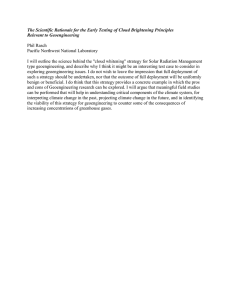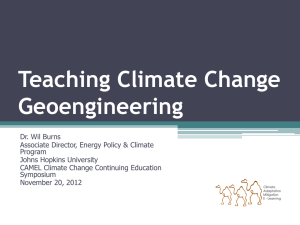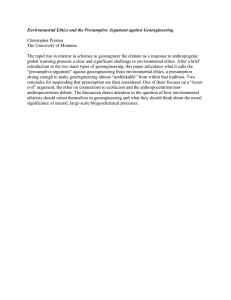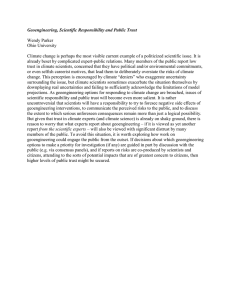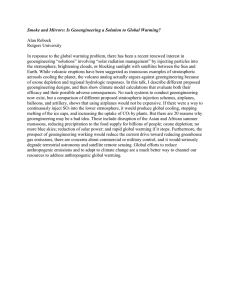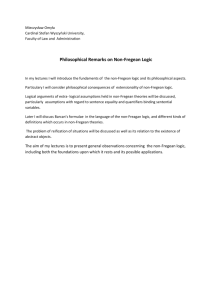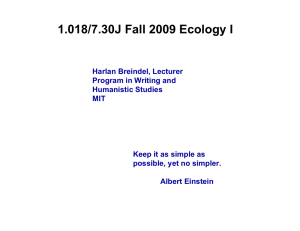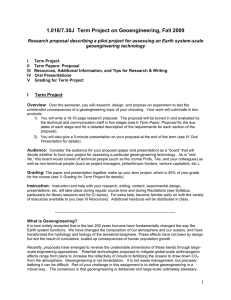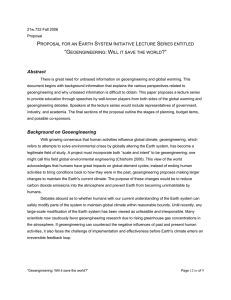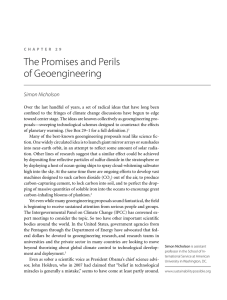Review of Climate Change Geoengineering: Philosophical Perspectives Please share
advertisement
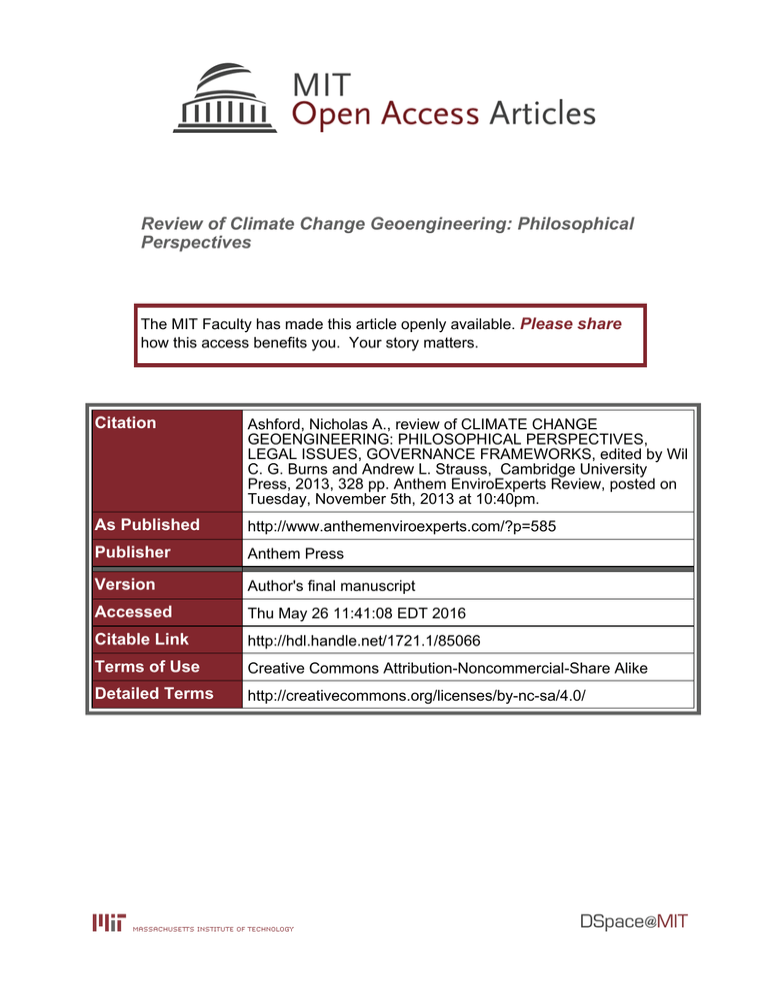
Review of Climate Change Geoengineering: Philosophical Perspectives The MIT Faculty has made this article openly available. Please share how this access benefits you. Your story matters. Citation Ashford, Nicholas A., review of CLIMATE CHANGE GEOENGINEERING: PHILOSOPHICAL PERSPECTIVES, LEGAL ISSUES, GOVERNANCE FRAMEWORKS, edited by Wil C. G. Burns and Andrew L. Strauss, Cambridge University Press, 2013, 328 pp. Anthem EnviroExperts Review, posted on Tuesday, November 5th, 2013 at 10:40pm. As Published http://www.anthemenviroexperts.com/?p=585 Publisher Anthem Press Version Author's final manuscript Accessed Thu May 26 11:41:08 EDT 2016 Citable Link http://hdl.handle.net/1721.1/85066 Terms of Use Creative Commons Attribution-Noncommercial-Share Alike Detailed Terms http://creativecommons.org/licenses/by-nc-sa/4.0/ BOOK REVIEW: Climate Change Geoengineering: Philosophical Perspectives, Legal Issues, Governance Frameworks Wil C. G. Burns and Andrew J. Strauss, editors. Cambridge University Press, Anthem Enviroexperts Review. Available at http://www.anthemenviroexperts.com/?p=585 This book is an apology for addressing global climate change through the application of geo-engineering (GE) which encompasses injection of reflective sulfate particles into the air and seeding the ocean with iron. The ethical implications of CE are addressed but most of the book is relegated to examining the technical, economic, legal, and political implications of its adoption – including challenges posed by nations taking unilateral action. Many of the essays in this multi-authored book argue that we have made little progress on reducing greenhouse gases (GHGs) – because of the large economic costs and lack of a collective world agreement -- and that the imperative of a worsening global climate leaves us little choice but to undertake the R&D necessary to develop CE, which some of the authors of the chapters consider inevitable. While the need to clarify and assess the side effects of CE is acknowledged, perhaps too much optimism – and too little technological and legal uncertainty -- about their management is voiced and in some cases defended on cost-benefit grounds. While the difficulties of getting a global agreement on reducing GHGs are discussed, a close reading of the book reveals equivalent, if not greater difficulties in addressing the legal barriers to CE. What is sorely missing from the book is an acknowledgement that since the economic meltdown of 2008, industrial activity and emissions have in fact slowed and some progress has been made in globalclimate policy alliances of western North-American states/provinces and some European countries, and the beginnings of GHG legal regulation are in process by the US EPA. The historic large rate of economic growth of the industrial nations is no longer assured as a result of the financial crisis. Meeting voluntary GHG reduction targets may now be more easily realized, not because of technological progress or political commitment, but because the developed world’s high through-put economic system may be reaching its systemic and economic limits. Further, should the real costs of global climate disruption begin to be increasingly fully realized in terms of agricultural disruption, coastal destruction, and weather-related disasters, the economic futility of reducing nations’ dependence on energy-intensive activities may also be waning. Cultural shifts in patterns of consumption, decreasing disposable income by many, cutbacks in industrial production, and an environmental awakening may well counter the arguments that we have no choice but to develop GE. The book makes an important contribution to policy discussions about CE, but its underlying premise that CE is inevitable and probably good is questionable. Nicholas A. Ashford Professor of Technology and Policy, and Director, MIT Technology and Law Program Massachusetts Institute of Technology
